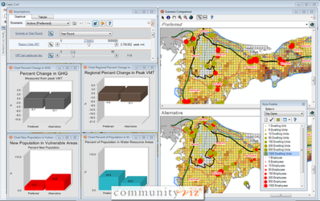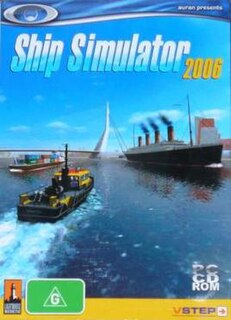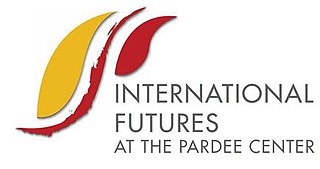
A simulation is the imitation of the operation of a real-world process or system over time. Simulations require the use of models; the model represents the key characteristics or behaviors of the selected system or process, whereas the simulation represents the evolution of the model over time. Often, computers are used to execute the simulation.
A simulation video game describes a diverse super-category of video games, generally designed to closely simulate real world activities.
A government simulation or political simulation is a game that attempts to simulate the government and politics of all or part of a nation. These games may include geopolitical situations, the creation of domestic political policies, or the simulation of political campaigns. They differ from the genre of classical wargames due to their discouragement or abstraction of military or action elements.
Given organizations' increasing dependency on information technology to run their operations, Business continuity planning covers the entire organization, and Disaster recovery focuses on IT.

Star Wars: X-Wing is a space simulation video game, the first of the X-Wing combat flight simulation games series. The player's character flies starfighters, including the eponymous X-wing, for the Rebel Alliance as part of a narrative that precedes and parallels the events of Star Wars Episode IV: A New Hope.

Critical infrastructure protection (CIP) is a concept that relates to the preparedness and response to serious incidents that involve the critical infrastructure of a region or nation.
Business simulation or corporate simulation is simulation used for business training, education or analysis. It can be scenario-based or numeric-based.

CommunityViz is the name of a group of extensions to ArcGIS Geographic Information System software. CommunityViz is an analysis tool used for, among other applications, urban planning, land use planning, geodesign, transportation planning and resource management applications. It also provides options for 3D visualization in the Scenario 3D and Scenario 360 plugins. CommunityViz also allows users to export and view their work in ArcGIS Online, Google Earth and other KML/KMZ viewers such as ArcGIS Explorer. The software was originally produced by the Orton Family Foundation and in 2005 was handed off to Placeways LLC. In 2017, the software was purchased by City Explained, Inc. where its development continues.

Ship Simulator is a ship simulator, a type of vehicle simulation computer game which simulates maneuvering various ships in different environments, although without the effects of wind and current. It was developed by Dutch company VSTEP and released by the former company Lighthouse Interactive, which closed down in 2009.

Military simulations, also known informally as war games, are simulations in which theories of warfare can be tested and refined without the need for actual hostilities. Military simulations are seen as a useful way to develop tactical, strategical and doctrinal solutions, but critics argue that the conclusions drawn from such models are inherently flawed, due to the approximate nature of the models used. Many professional analysts object to the term wargames as this is generally taken to be referring to the civilian hobby, thus the preference for the term simulation.
Simulation software is based on the process of modeling a real phenomenon with a set of mathematical formulas. It is, essentially, a program that allows the user to observe an operation through simulation without actually performing that operation. Simulation software is used widely to design equipment so that the final product will be as close to design specs as possible without expensive in process modification. Simulation software with real-time response is often used in gaming, but it also has important industrial applications. When the penalty for improper operation is costly, such as airplane pilots, nuclear power plant operators, or chemical plant operators, a mock up of the actual control panel is connected to a real-time simulation of the physical response, giving valuable training experience without fear of a disastrous outcome.

CyberCIEGE is a serious game designed to teach network security concepts. Its development was sponsored by the U.S. Navy, and it is used as a training tool by agencies of the U.S. government, universities and community colleges.

SimPort-MV2 is a computer-supported construction and management simulation game that mimics the processes involved in planning, equipping and exploiting the Second Maasvlakte (MV2) in the Port of Rotterdam. The Second Maasvlakte is a port expansion project to be situated on newly reclaimed land adjacent to the existing port area.

International Futures (IFs) is a global integrated assessment model designed to help with thinking strategically and systematically about key global systems. It is housed at the Frederick S. Pardee Center for International Futures. Initially created by Barry B. Hughes of the Josef Korbel School of International Studies at the University of Denver in Colorado, the model is free for public use in both its online and downloadable forms.
A dispatcher training simulator (DTS), also known as an operator training simulator (OTS), is a computer-based training system for operators of electrical power grids. It performs this role by simulating the behaviour of the electrical network forming the power system under various operating conditions, and its response to actions by the dispatchers. Student dispatchers may therefore develop their skills from exposure not only to routine operations but also to adverse operational situations without compromising the security of supply on a real transmission system.
A serious game or applied game is a game designed for a primary purpose other than pure entertainment. The "serious" adjective is generally prepended to refer to video games used by industries like defense, education, scientific exploration, health care, emergency management, city planning, engineering, and politics. Serious games are a subgenre of serious storytelling, where storytelling is applied "outside the context of entertainment, where the narration progresses as a sequence of patterns impressive in quality ... and is part of a thoughtful progress". The idea shares aspects with simulation generally, including flight simulation and medical simulation, but explicitly emphasizes the added pedagogical value of fun and competition.
A stress test, in financial terminology, is an analysis or simulation designed to determine the ability of a given financial instrument or financial institution to deal with an economic crisis. Instead of doing financial projection on a "best estimate" basis, a company or its regulators may do stress testing where they look at how robust a financial instrument is in certain crashes, a form of scenario analysis. They may test the instrument under, for example, the following stresses:

The Universal Military Simulator is a computer game developed by Rainbird Software in 1987 for the Apple II, Macintosh, Tandy 4000, and IBM PC compatibles. In 1988 both Atari ST, Amiga versions were released. The game was created by Ezra Sidran. The PC and Amiga versions were ported by Ed Isenberg. The game spawned two sequels: UMS II: Nations at War and The War College: Universal Military Simulator 3.

Traffic simulation or the simulation of transportation systems is the mathematical modeling of transportation systems through the application of computer software to better help plan, design, and operate transportation systems. Simulation of transportation systems started over forty years ago, and is an important area of discipline in traffic engineering and transportation planning today. Various national and local transportation agencies, academic institutions and consulting firms use simulation to aid in their management of transportation networks.
Project team builder (PTB) is a project management simulation tool developed for training and teaching the concepts of project management and for improving project decision making. A number of published books and academic papers are based on the PTB and its predecessors. The PTB won the Project Management Institute Professional Development Product of the Year Award. The PTB is used in universities and business organizations around the world. The simulator is based on an approach that separates the simulation engine from the scenario editor and allows each user to simulate any project. The simulation engine simulates the dynamic stochastic nature of modern projects. The design of the PTB supports the system engineering approach to Problem solving as each scenario presents the requirements, the alternatives that can be selected and the constraints imposed on the solution. The user has to trade off the cost, schedule, risk, and benefits to the stake holders and to find a feasible, robust, good solution for the scenario. The solution is then simulated by the simulation engine while the trainee exercises monitoring and control throughout the execution. A planned project can be simulated using Monte Carlo simulation. This is done in automatic mode and shows the probability to finish the project at any time period or at any cost. Furthermore, based on the Monte Carlo simulation the probability of each activity to be on the critical path is estimated. The Monte Carlo analysis supports risk analysis and decision making. Another characteristic of the simulator is the ability to save points in the history of each run for future analysis or even for testing a different solution from any of the points saved.












